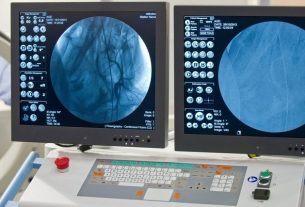Alkaline phosphatase is an enzyme present in various tissues of the body that is released into the blood mainly from the bones and liver, by the cells that line the channels that transport bile to the intestine.
High alkaline phosphatase may indicate problems such as hepatitis, bile duct obstruction and hyperparathyroidism. Low alkaline phosphatase can be caused by diseases such as malnutrition, hypothyroidism and zinc or magnesium deficiency.
In case of changes in the alkaline phosphatase test, especially if there are symptoms such as dark urine, jaundice and/or abdominal pain, it is recommended to consult a general practitioner to identify the cause and initiate the most appropriate treatment.

What does the result mean
The amount of alkaline phosphatase circulating in the body may be indicative of some situations that must be evaluated by the doctor:
1. High alkaline phosphatase
Alkaline phosphatase may be elevated in the following situations:
- Pancreatic diseases, such as chronic pancreatitis or cancer;
- Bile duct diseases, such as bile flow obstruction or bile duct cancer;
- Liver diseases, such as hepatitis, cirrhosis or tumors;
- Neoplasia;
- Leukemia;
- Infections;
- Renal insufficiency;
- Heart attack;
- Benign familial hyperphosphatemia.
Furthermore, this enzyme may be very high in situations where there is increased bone formation activity, such as in some types of bone cancer, osteomalacia, primary and secondary hyperparathyroidism or in people with Paget’s disease, which is a disease that It is characterized by the abnormal growth of certain parts of the bones. Learn more about Paget’s disease.
Some normal physiological situations can cause an increase in alkaline phosphatase, as happens during the growth period due to bone formation activity, in people over 60 years old, due to bone loss, or during pregnancy due to placental function, especially in the third quarter.
Do you have questions about your exam results?
Alkaline phosphatase levels are rarely low, however this enzyme may be reduced in the following situations:
- Hypophosphatasia, which is a genetic disease that causes deformations and fractures in the bones;
- Malnutrition;
- Hypothyroidism;
- Severe diarrhea;
- Celiac disease;
- Enteritis;
- Deficiency of magnesium, zinc, vitamin B6, folic acid and vitamin C;
- Protein deficiency;
- Heart surgeries;
- Cretinism, which is a congenital disorder that causes growth delay;
- Pernicious anemia and aplastic anemia;
- Chronic myeloid leukemia or chronic granulocytic leukemia.
Furthermore, some medications, such as birth control pills and hormone replacement therapy medications used during menopause, can also cause a slight decrease in alkaline phosphatase levels.
When to take the exam
The alkaline phosphatase test should be done when signs and symptoms of liver disorders are present, such as enlarged abdomen, pain on the right side of the abdomen, jaundice, dark urine, pale stools and generalized itching.
Furthermore, this exam is also indicated for people who have bone signs and symptoms such as generalized bone pain, bone deformities or who have suffered fractures.
How the exam is carried out
The test can be carried out in a laboratory, where a healthcare professional takes around 5 ml of a blood sample from a vein in the arm, which is placed in a closed container to be analyzed.
Reference values
Alkaline phosphatase test reference values vary with age, due to growth:
Children and teenagers:
- < 2 anos: 85 – 235 U/L
- 2 to 8 years: 65 – 210 U/L
- 9 to 15 years: 60 – 300 U/L
- 16 to 21 years old: 30 – 200 U/L
Adults:
During pregnancy, alkaline phosphatase blood levels may be slightly altered, due to the baby’s growth and because this enzyme is also present in the placenta.
Along with this examination, examination of other enzymes found in the liver such as alanine aminotransferase, aspartate aminotransferase, gamma glutamyl transpeptidase and bilirubin, imaging tests or even a liver biopsy can also be carried out. See how these exams are carried out.
Bibliography
- STATPEARLS. Alkaline Phosphatase. 2022. Available at: <https://www.ncbi.nlm.nih.gov/books/NBK459201/>. Accessed on 09 Nov 2023
- J. Sánchez Rodríguez. Why are alkaline phosphatases increased?. ELSEVIER. 2002
- UC SAN DIEGO HEALTH. Alkaline phosphatase. Available at: <https://www.fosfatasaalcalina.org/tenemos-fosfatasa-alcalina-baja/>. Accessed on January 9, 2023
- FOSFATASAALCALINA.ORG. WHY DO WE HAVE LOW ALKALINE PHOSPHATASE?. Available at: <https://www.fosfatasaalcalina.org/tenemos-fosfatasa-alcalina-baja/>. Accessed on January 9, 2023

Sign up for our newsletter and stay up to date with exclusive news
that can transform your routine!
Warning: Undefined array key "title" in /home/storelat/public_html/wp-content/plugins/link-whisper-premium/templates/frontend/related-posts.php on line 12
Warning: Undefined array key "title_tag" in /home/storelat/public_html/wp-content/plugins/link-whisper-premium/templates/frontend/related-posts.php on line 13



